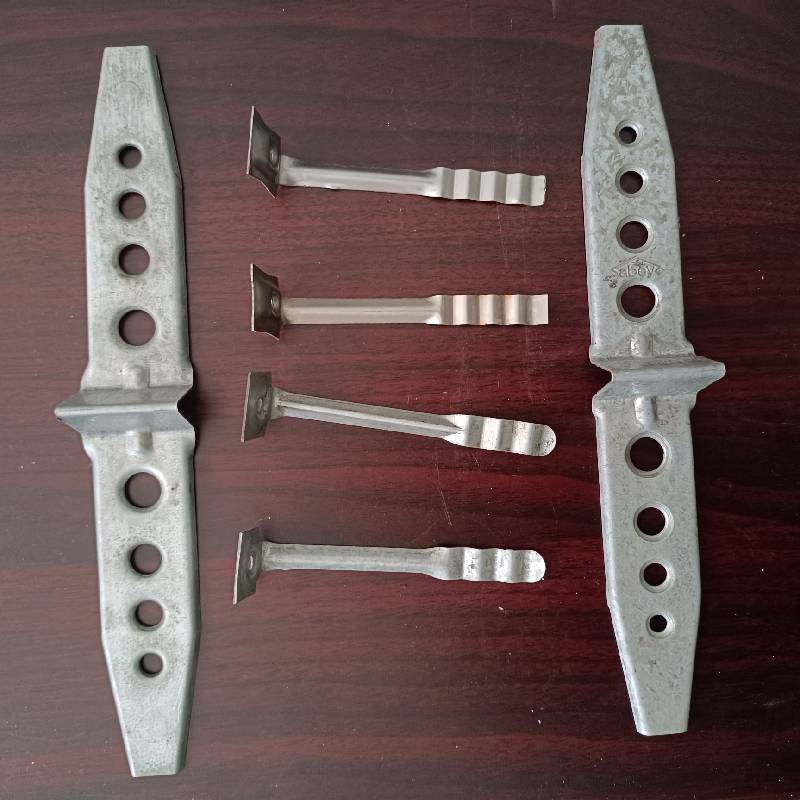
- Mobile Phone
- +8613931874955
- sales@cntcmetal.com
Cavity Wall Tie Restoration Solutions for Long-lasting Structural Integrity and Safety
Cavity Wall Tie Repair Ensuring Structural Integrity and Longevity
Cavity wall construction has become a popular choice for modern buildings due to its excellent thermal insulation properties and improved resistance to moisture. This construction method typically involves two separate wall leaves with a gap or cavity between them. However, over time, the ties that hold these walls together can corrode or degrade, necessitating timely repairs to maintain structural integrity and prevent further damage. Understanding the importance of cavity wall tie repair, its signs, and the repair process can help homeowners and building managers take proactive measures.
Importance of Cavity Wall Ties
Cavity wall ties are essential components that ensure the stability and functionality of a cavity wall. They connect the inner and outer leaves of the wall, allowing for a transfer of loads and providing resistance against wind pressure. Without these ties, the walls may become unstable, leading to potential collapse or severe structural damage. Therefore, maintaining the integrity of cavity wall ties is crucial for the safety and longevity of a building.
Signs of Damage
Recognizing the signs of damaged or corroded cavity wall ties is vital for early intervention. Common indicators include visible bulging or leaning of the outer wall, cracks in the masonry, or damp patches on interior walls. Homeowners may also notice rust stains or efflorescence on the exterior, which can suggest water ingress and deteriorating ties. If any of these signs are observed, it is essential to conduct a thorough inspection and consider repair options.
The Repair Process
cavity wall tie repair

When it comes to cavity wall tie repair, several methods can be employed depending on the extent of the damage. 1. Tie Replacement If the ties are found to be severely corroded, the most effective solution is to replace them. This involves accessing the cavity, removing the damaged ties, and installing new ones. The new ties should be made of corrosion-resistant materials such as stainless steel to ensure longevity.
2. Resin Injection In cases where the ties are still structurally sound but show signs of corrosion, resin injection can provide a viable repair solution. This method involves injecting a specialized resin into the cavity to bond the wall leaves together and enhance the load-bearing capacity of the ties.
3. Wall Anchors For additional support, wall anchors may be installed to secure the outer wall to the inner leaf. This method provides reinforcement that can help restore stability and protect against future movement.
Prevention is Key
While repairs are crucial, proactive measures can help prevent the degradation of cavity wall ties in the first place. Regular inspections and maintenance are vital to identify issues early. Homeowners should ensure proper drainage around their property to prevent water accumulation, which can expedite corrosion. Additionally, managing vegetation growth near walls and ensuring adequate ventilation in the wall cavity can help minimize moisture levels.
Conclusion
Cavity wall tie repair is an essential aspect of building maintenance that ensures the safety and longevity of structures built with cavity wall construction. Promptly addressing the signs of damage and employing appropriate repair methods can prevent more extensive and costly issues down the line. By prioritizing the maintenance of cavity wall ties, homeowners and building managers can safeguard their properties, ensuring structural integrity and peace of mind for years to come.
share:
-
Your Source for Concrete Wall Ties and Masonry AccessoriesNewsJul.10,2025
-
Unlocking the Power of Iron Wire for Every ProjectNewsJul.10,2025
-
Explore Advanced Chain Wire and Stainless Steel Mesh FencingNewsJul.10,2025
-
Discover the Benefits of Annealed Wire ProductsNewsJul.10,2025
-
Discover China Stainless Steel Wire Mesh SolutionsNewsJul.10,2025
-
Build with Confidence Using High-Performance Masonry AccessoriesNewsJul.10,2025
-
Why Sacrificial Formwork Is Redefining Underground ConstructionNewsJun.06,2025



















